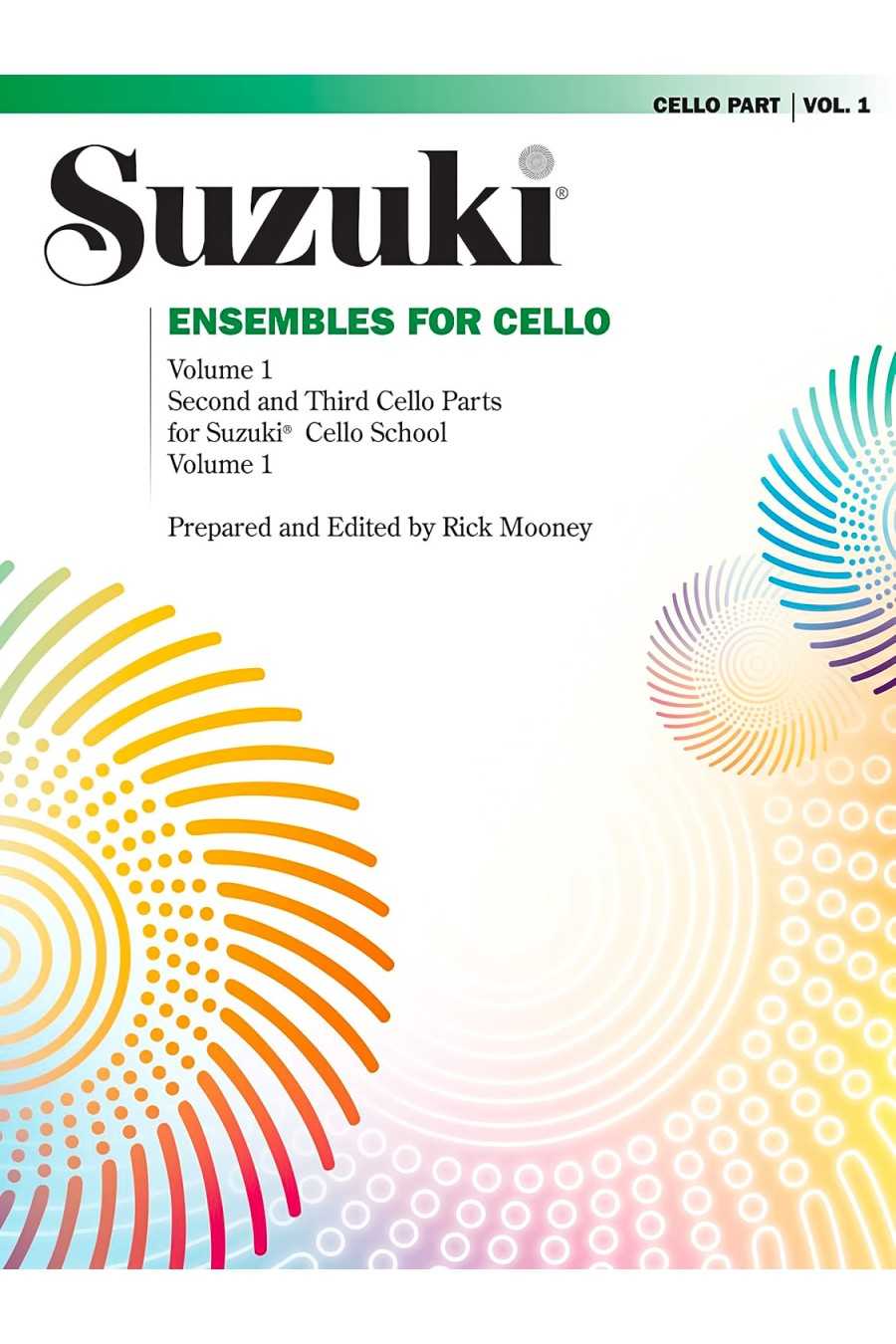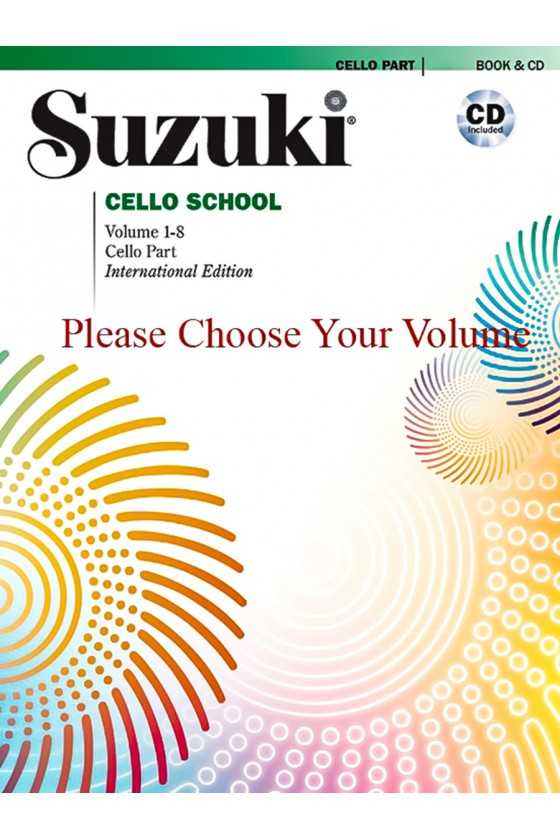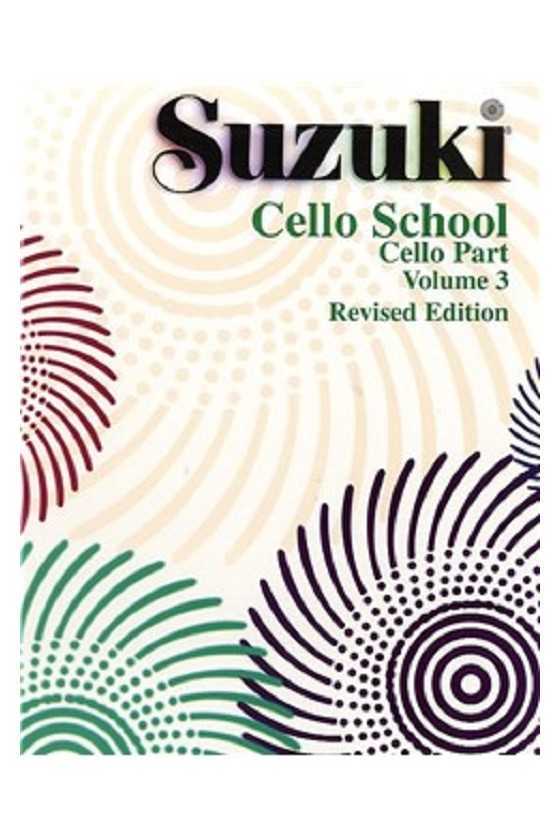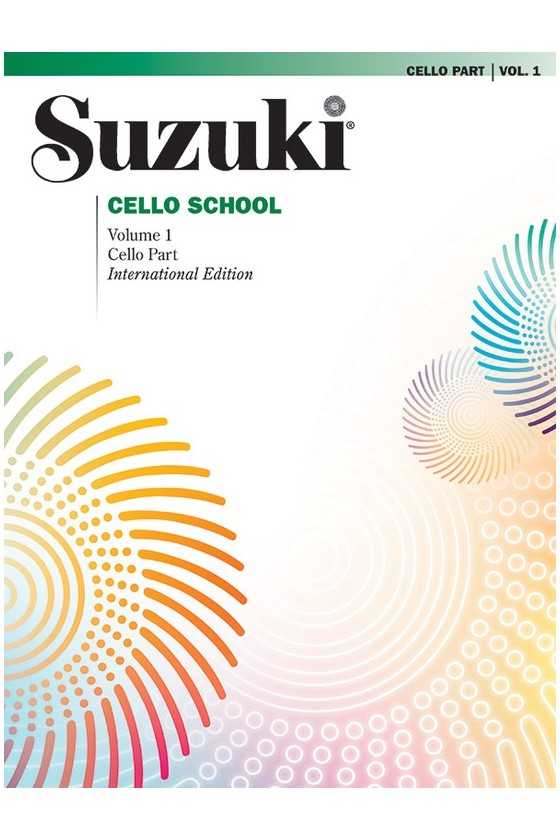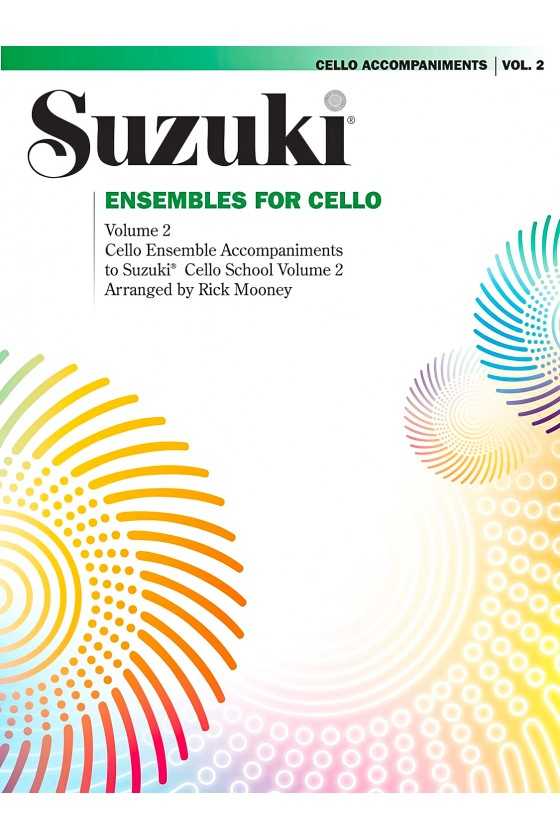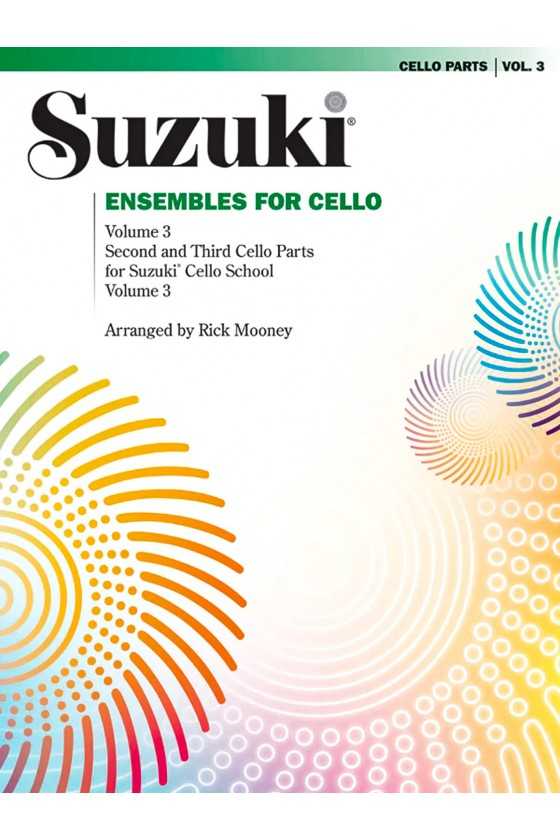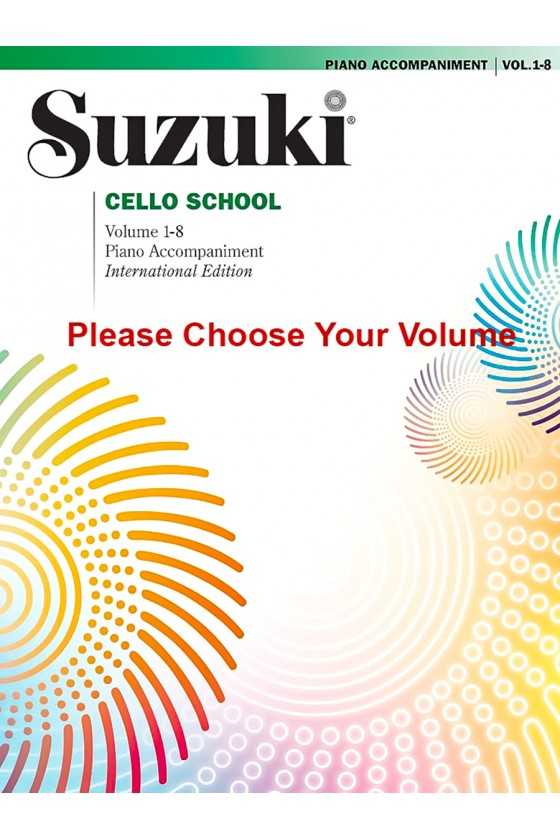Suzuki Ensembles for Cello Volume 1
The books, prepared and edited by Rick Mooney, a well-known Suzuki teacher, teacher-trainer, and member of the Suzuki Cello Committee, contain harmony parts for many pieces in the Suzuki Cello School Volumes 1, 2, 3, and 4. These pieces have been arranged to resemble the existing piano accompaniments closely. They enable a cello teacher who does not play or has access to a piano to play harmony parts with students to prepare them for when a piano and pianist are available. Additionally, these parts provide extra challenges for more advanced players during a group lesson.
Volume 1 contents are: Twinkle, Twinkle, Little Star Theme and Variations (Shinichi Suzuki) * French Folk Song (Folk Song) * Song of the Wind (Folk Song) * Go Tell Aunt Rhody (Folk Song) * O Come, Little Children (Folk Song) * May Song (Folk Song) * Allegro (Shinichi Suzuki) * Perpetual Motion (Shinichi Suzuki) * Long, Long Ago (T. H. Bayly) * Andantino (F. J. Gossec) * Rigadoon (H. Purcell) * Etude (Shinichi Suzuki) * Minuet in C, No. 11 in G Major from Notebook for Anna Magdalena Bach (J. S. Bach) * Maytime (cello duet), Komm Lieber Mai from Sehnsucht nach dem Frühlinge, K. 596 (W. A. Mozart) * Maytime (cello quartet) (W. A. Mozart) * Minuet No. 2 from Minuet in G Major, BWV 116 (J. S. Bach).
